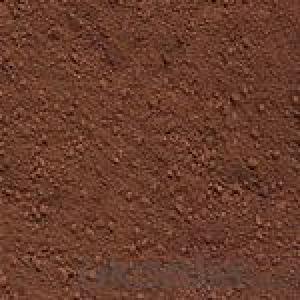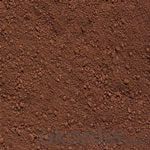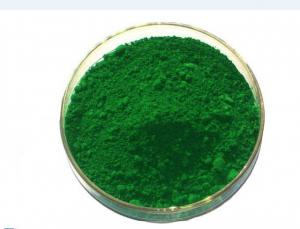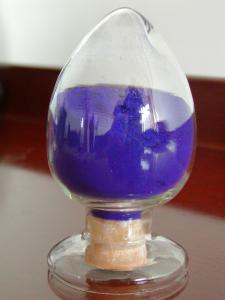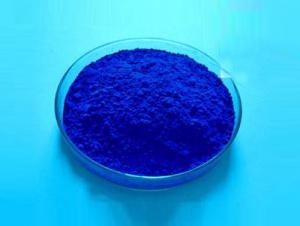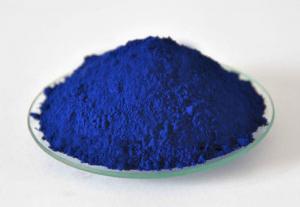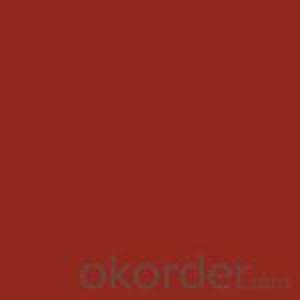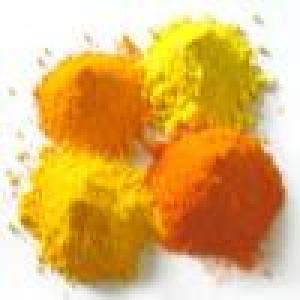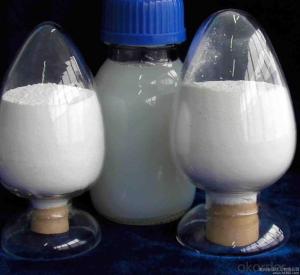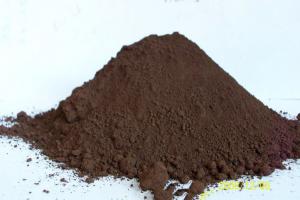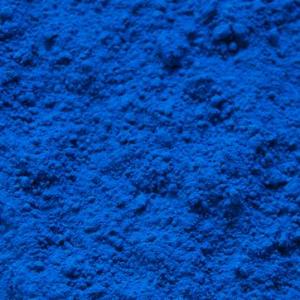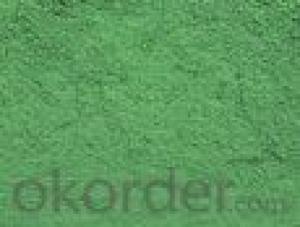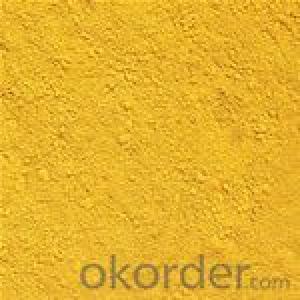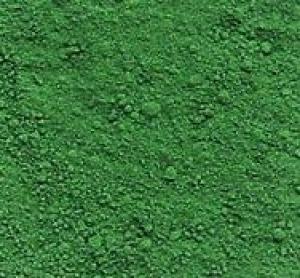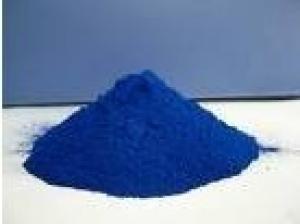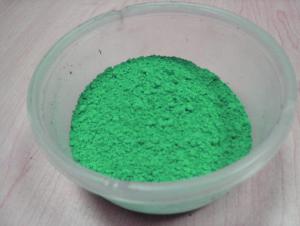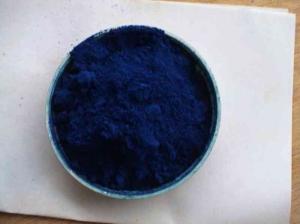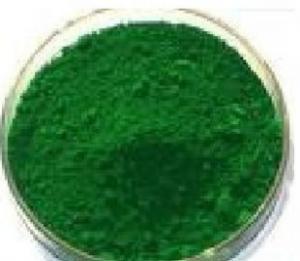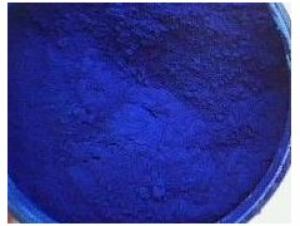Iron Oxide Brown Pigment 610
- Loading Port:
- China Main Port
- Payment Terms:
- TT OR LC
- Min Order Qty:
- -
- Supply Capability:
- -
OKorder Service Pledge
OKorder Financial Service
You Might Also Like
Quick Details
· CAS No.: 1309-37-1;1317-60-8;1332-37-2
· Other Names: Ferric Oxide
· MF: Fe2O3
· EINECS No.: 215-168-2;215-275-4;215-570-8
· Place of Origin: (Mainland)
· Usage: Ceramic Pigments, Coating Pigment, Cosmetic Pigment, Ink Pigments, Plastic & Rubber Pigment, Leather Pigments, cement/concrete parts pigments
· Model Number: 610
· Type: Iron Oxide
· Style: Inorganic Pigment
· Product Name: iron oxide brown pigment
· Color: black
· Type: 610
· Fe2O3 component: from 90% to 98%
· Moisture: black, <1.5% red,yellow,green<1%
· PH value: 4-7
· Apparent Density: 0.7g/cm^3-1.1 g/cm^3
· Particle shape: spherical,irregular,acicular
· Inspection/certification: SGS,CIQ,BV,Asia Inspection
· Package: pp or colored valve or super bags
Packaging & Delivery
Packaging Details: | 1. 25kgs thermo-fusible bags 2. 25kgs paper bag with plastic inner 3. 25kgs colored valve bag 4. 600kgs or 1000kgs super or jumbo bags 5. 1 tons or 1.25 tons wooden pallet 6. other customized package like the drum etc |
Delivery Detail: | within 15-20 days after signing the contract |
Specifications
iron oxide black pigment
1.red/yellow/blue/green/brown
2.SGS/BV/ISO9001 inspected
3. tinting strength>95%
4. chromatism<1
1: Brief introduction of the iron oxide pigment:
The Iron oxide pigment is made by iron, hydrochloric acid, sodium hydroxide which is adopted wet processing method...
As the most important inorganic colorant, the iron oxide pigment is characterized with strong tinting strength,easy
dispersibility,excellent fastness and good weather resistant, it is widely used in the concrete roofing tile,paver,
stucco,masonary,paint,coating,rubber, plastic,paper and leather industries...
2. The technique data and specification of the iron oxide pigment:
Item | Index |
Primary color |
|
Diluted color |
|
Iron content (Fe3O4) 105℃ drying%≥ | 90 |
Fineness (325 mesh wet sieve residue)%≤ | 0.3 |
Oil absorption, g/100g | 20-25 |
Moisture & 105℃ volatile% | 1.5 |
Water solubles% ≤ | 0.3 |
Water suspended matter PH value | 4-7 |
Relative tinting strength (compared with standard sample%) ≥ | 100±2 |
3. The application of the Iron oxide pigments:
A: Iron oxide pigment is used as dye or colorant in various prefabricated concrete parts and architectural products and material,
it is directly added into cement to color up various indoor and outdoor cement surface, for example: wall,terrances,ceilings,
pillars,corridors,roads, car-parking stairs as well as building ceramic and glazed ceramics.. like facing bricks, floor tile, roofing
tiles,panels,terrazzo,mosaic tiles,artificial marbles,etc...
B: Iron oxide pigment is also applicalbe to different coating and protetive materials, including water-based exterior wall paint,
and powder coating, as well as to oil paints. such as epoxy,alkyd,amidogen, and some other primier and finish paint.. it can be
used in toy paints,decorative paints,furniture lacuquers,electrophoresis paints, and enameled paints,etc..
C:Iron oxide pigment is also used coloring material for plastic products like the thermosetting plastic and thermoplasstic,
as well as in rubber products, such as tyre tubes for bycle,automobile,etc..
4. The package and transporation, loading conditions of the Iron oxide pigments:
A: The package of Iron oxide pigment:
a:25kgs thermo-fusible bags
b:25kgs paper bag with plastic inner
c:25kgs colored valved bag
d:600kgs or 1000kgs super or jumbo bags
e:1 ton or 1.25 tons wooden pallet
f:other customized package like the drums etc..
B: The quantity of each iron oxide pigments can be loaded:
a: Iron oxide red 25kgs craft paper bags, 22 MT per 20ft container
b: Iron oxide yellow 25kgs craft paper bags, 13MT per 20ft container
c: Iron oxide black 25kgs craft paper bags, 20MT per 20ft container
5. Why choose us as the supplier of the iron oxide pigments:
A: Professional:
21 years experieance focusing on pigment industry, professional guide and throughly market analysis..
B: Quality control:
high quality raw material, advanced equipment, accept SGS,BV,Asia inspection, ISO9001 certification..
C: Competitive price:
strictly control the production cost, factory producing, lower product profit strategy
D: Best service:
quick delivery time, 24 hours quick response, quick reaction for any questions or problems
E: Sample free:
All sample is free, customer just need to pay the charges of express, when the sample is qualified,
will pay back the sample express fees back from trial order..
G: Good credit:
attend the china internal coating exibiton held in guangzhou and shanghai
6. The situation of our customers :
We only focus on pigments,especially inorganic pigments including iron oxide pigment, chrome yellow and
orange,XD titanium pigments, new iron titanium anticorrosion powder.. we got ISO9001certification and accept
SGS,BV,Asia inspection or other third party inspection before shipment..
We has been exported our goods to south korea, malaysia,Russia,Somalia,Ethiopia,
America,Brazil,Central asia for good quality and best credit...
7. Other informations:
A:Moq: 5 Tons
B:Payment Term: TT or L/C sight
C: H.S code: 2821100000
- Q: thank you very much for your help!
- Well photosynthetic pigments has to do with the different component of light (i.e. the colors - ROYGBIV) and their specific wavelenght. Photosynthetic pigments based on their colors can capture the energy from that wavelenght. For example fucoxanthin can capture the brown color of the light just like phycocyanin can capture the blue color of the light. These photosynthetic pigments are usually the accessory pigments of Chlorophyll A which is the main pigments of most of the photosynthetic organisms in the earth.
- Q: i love makeup so mucch im like addicted...lol but the only thing is that i only buy that department or drug store brands cause i cannot afford high quality brands. the one that i buy are good for me,,but anyways i was wondering what the heck is mac eyepigment,,what is the diffrence between eyeshow and pigment? pleas help thank u,,,oh yeah and what does it look,like on the eyes?
- Mac pigments are great to use if you love makeup like myself. I use this one called frost and it's great for mixing your eyeshadows, as a highlighter, and even mix it with your lipstick or lip glosses. This other one i have is pot of gold or something like that , but i mainly use it on my eyes and maybe a lil with my lip gloss. It's has a shimmer look to it, so a little goes a long way, but it's pretty much versitile. I also use pigment by loreal and i like the colors it does work , but not as good as Mac, but the you need to spend some money on good makeup brushes , that way you it will go on evenly and won't make you look like a racoon. Hope this helps
- Q: I Need a Bright Colorful High Pigmented Eyeshadow Pallet. i saw some on amazon. but Tehre Out Of stock. :[ Also i need bright colors like realllly bright
- If you want bright colors like that, you should get shimmers or pigments. These are loose eyeshadows that you can pack it on. Many people use a cream base so the eyeshadows can stick onto the skin. If you want something cheap. I know kryolan makes theatrical make up and you can just buy their paint pots. They have the primary colors plus black and white. You will get very vibrant colors if you use cream eyeshadows rather than powder eyeshadows. If you do want to use powder eyeshadows, then you can use a liquid transformer to turn the eyeshadows into liquids so you can paint it onto the skin. Some examples of liquid transformers for cheap would be visine or water. You dip the brush into the liquid transformer and then brush it onto the compact eyeshadows. After that, you just brush it onto the eyelids.
- Q: My wife went to the eye doctor to get new glasses (because she couldn't renew her driver's license with her glasses she had been using), and the doctor said that she wasquot;losing pigment&quot; in both of her eyes. He said not to worry, but he wants her to make an appointment every 6 months, instead of just once a year.What does it (her losing pigment in her eyes) mean? Is it really nothing to worry about?(My wife doesn't seem worried, she hates going to doctor's but she trusts them when she goes to them; she doesn't ask questions-- she feels that if she needed to know something the doctor would tell her.)
- Yes, pigment is what gives your eyes color like Insanity said. It has nothing to do with the cornea becoming cloudy or going blind. In fact, it shouldn't affect her vision at all. The reason that the doctor wants to see her often is probably because as the pigment comes off the iris, it flows through the ocular fluid. This fluid follows a certain course through the eye and leaves through something called the trabecular meshwork, kind of like a filter or strainer. The pigment can block this meshwork, causing the pressure in the eye to increase, which can damage the eye. The pigment would have to build up before this happened, though, so don't worry about this happening over night or something. As long as the doctor is checking up on her, I'm sure she will be fine, so make sure she goes in for those checkups. For more information, look up Pigment Dispersion Syndrome.
- Q: Know this ounds kinda obvious but just wanted to confirm, is there more pigment in the middle of the beetroot than on the edges?
- I've known it to be in the skin and thats from a cooking point of view.
- Q: how are the pigments in clothes differ from plant pigments?
- Pigments are pigments. They are made of molecules that absorb some colors and reflect others from the visible spectrum of light, which gives everything color. Black pigments absorb everything and reflect nothing, so black is the absence of color and it is why dark clothing are warmer in winter. White pigments reflect everything and absorb nothing, so clothing that is white is cooler in summer. Most plants have more chlorophyll, a green pigment, in them than other pigments, so the plant is overwhelmingly reflecting green back to our eyes and absorbing the red and blue ends of the spectrum. In fall, when the chlorophyll breaks down, we can see the yellow, orange, and red pigments that are also in the leaf for a few weeks. In this way, all pigments are alike. However, perhaps what your teacher is looking for is that the green pigment chlorophyll in plants not only absorbs red and blue wavelengths of light, it also uses that energy to excite electrons from the molecules of chlorophyll and send them through an electron transport chain that enables light energy to be converted to chemical energy and store it in the C-H bonds of glucose, which is made during photosynthesis. Other pigments, whether they be in clothes or other objects such as cars or just about anything else do not do this. Only plant chlorophyll, or the green pigment in plants, converts light energy to chemical energy. That is the one huge difference. Otherwise, like all other pigments, chlorophyll absorbs some wavelengths of light and reflects others, in the case of chlorophyll, green wavelengths of light.
- Q: 1.what is pigment2.what is it for ( whats its purpose?)3.what are other things people do with it
- Pigment is a loose powder that has highly concentrated color. They come in different finishes like matte or shimmery. You can use them as eye shadows and such, which is what most people do with them. They show up better and the metallic ones can be foiled (more vivid color and looks like metal almost) if you use them wet by putting a little bit of mixing medium or eye drops on your brush before dipping it in the pigment and applying it. They can also be used as lip colors by mixing with a clear lipgloss, or eyeliner if you use them wet or mix them with something like MAC's special eyeliner mixing medium. They also make a mascara mixing medium that can be used with pigments. Pigments really are a handy, universal product to have! Keep in mind that some pigments are not safe for use in the eye and/or lip area. If you look at MAC's website where the pigments are, you can check out the specifics about that under View Recommended Use. Also, if you use pigments wet, it's best to get a little bit of it in the jar lid, then dip the brush in it. That way you won't dampen and ruin the pigments in the jar, and moisture in the jar could promote the growth of bacteria.
- Q: What are leaf Pigments?
- Pigments that are present in the leaf that impart colour to the leaf are called leaf pigments. They are chemical compounds. Green colour in plants is due to Chlorophyll. Cholorophyll are also of different types Chlorophyll-A, Chlorophyll-B, Chlorophyll-C and Chlorophyll-D. Different colours are imparted to plants by different pigments. Some are Xanthophyll and Carotenoids.
- Q: is it the ink on regular printers?
- Some printers use only pigmented ink. Others use dye based and then some use a combination of both. Dye based ink is basically water based with a dye added to it. Pigmented ink has a solvent base with dye added. Pigment ink and dye based ink have both advantages and disadvantages. Dye based ink have better colors but pigment are more water and fade resistant. Dye based inks are therefore better for photos. I have a printer that has 4 dye based inks and a black pigment ink. Mine uses the dye based black and colours for pictures and the pigmented black is used for text. So the answer is yes. Pigmented ink is used in some regular printers.
- Q: How are plant pigments involved in photosynthesis?
- Plant pigments - as other pigments - interact with light to absorb only certain wavelengths. In plants the different sorts of pigments are useful to absorb available wavelengths of light and enable photosynthesis in shadow, in bright sunshine, in deep sea etc.: each pigment reacts with only a narrow range of the spectrum, there is usually a need to produce several kinds of pigments, each of a different color, to capture as much as possible of the sun's energy.
Send your message to us
Iron Oxide Brown Pigment 610
- Loading Port:
- China Main Port
- Payment Terms:
- TT OR LC
- Min Order Qty:
- -
- Supply Capability:
- -
OKorder Service Pledge
OKorder Financial Service
Similar products
Hot products
Hot Searches
Related keywords
